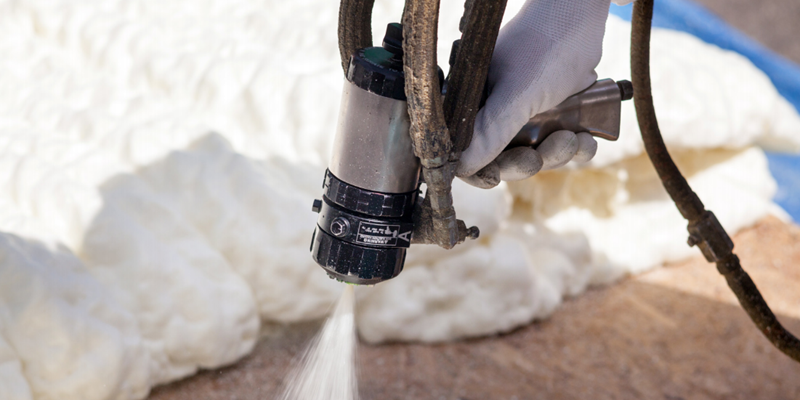Spray foam insulation is a versatile and effective material used in the construction and insulation industry to improve energy efficiency and structural integrity. It is primarily composed of a blend of chemicals that react to form an expanding foam, which provides excellent insulation properties by sealing gaps, cracks, and other areas prone to air leakage. This insulation material is widely used in residential, commercial, and industrial buildings, offering superior thermal performance and energy savings.
What is Spray Foam Insulation Made Of?
Spray foam insulation is typically made from two main liquid components: isocyanates and polyols. When these two components are mixed together, they react to form a foam that expands and hardens. The key to this process is the use of specialized polyurethane catalysts that control the reaction rate, ensuring that the foam cures properly and achieves the desired insulation properties.
1. Isocyanates:
Isocyanates are reactive chemicals that play a crucial role in the formation of polyurethane foam. They react with polyols to create the polyurethane polymer matrix, which gives the foam its structure and durability.
2. Polyols:
Polyols are another essential component in spray foam insulation. They are mixed with isocyanates to produce the polyurethane foam. The type and formulation of polyols can vary, allowing for different foam characteristics, such as flexibility, rigidity, and density.
3. Polyurethane Catalysts:
Polyurethane catalysts are critical in controlling the reaction between isocyanates and polyols. These catalysts ensure that the foam expands and cures correctly, providing the desired insulation properties. For instance, the MXC-A33 catalyst is used for producing soft, hard, and semi-hard foam bubbles, making it versatile for different insulation needs. It can also dissolve in solvents like MEG, DEG, and BDO, allowing for various applications. On the other hand, MXC-T is used in the production of polyether flexible foam, molded foam, semi-rigid foam, and rigid foam, making it ideal for automotive insulation applications.
Applications of Spray Foam Insulation
Spray foam insulation is used in a variety of applications, including:
- Residential Insulation: Spray foam is commonly used in homes to insulate walls, roofs, and attics, helping to reduce energy costs and improve comfort.
- Commercial Buildings: It is also used in commercial structures to insulate large spaces, providing a more controlled environment and reducing heating and cooling expenses.
- Industrial Applications: Spray foam insulation is used in industrial settings to insulate pipes, tanks, and other equipment, preventing energy loss and enhancing efficiency.
Conclusion
Polyurethane catalyst spray foam insulation is a highly effective material that offers superior insulation properties. The use of specialized catalysts like MXC-A33 and MXC-T ensures that the foam cures properly, providing the desired insulation characteristics for various applications. Whether in residential, commercial, or industrial settings, spray foam insulation is an invaluable tool for enhancing energy efficiency and structural integrity.
Post time: Aug-28-2024

